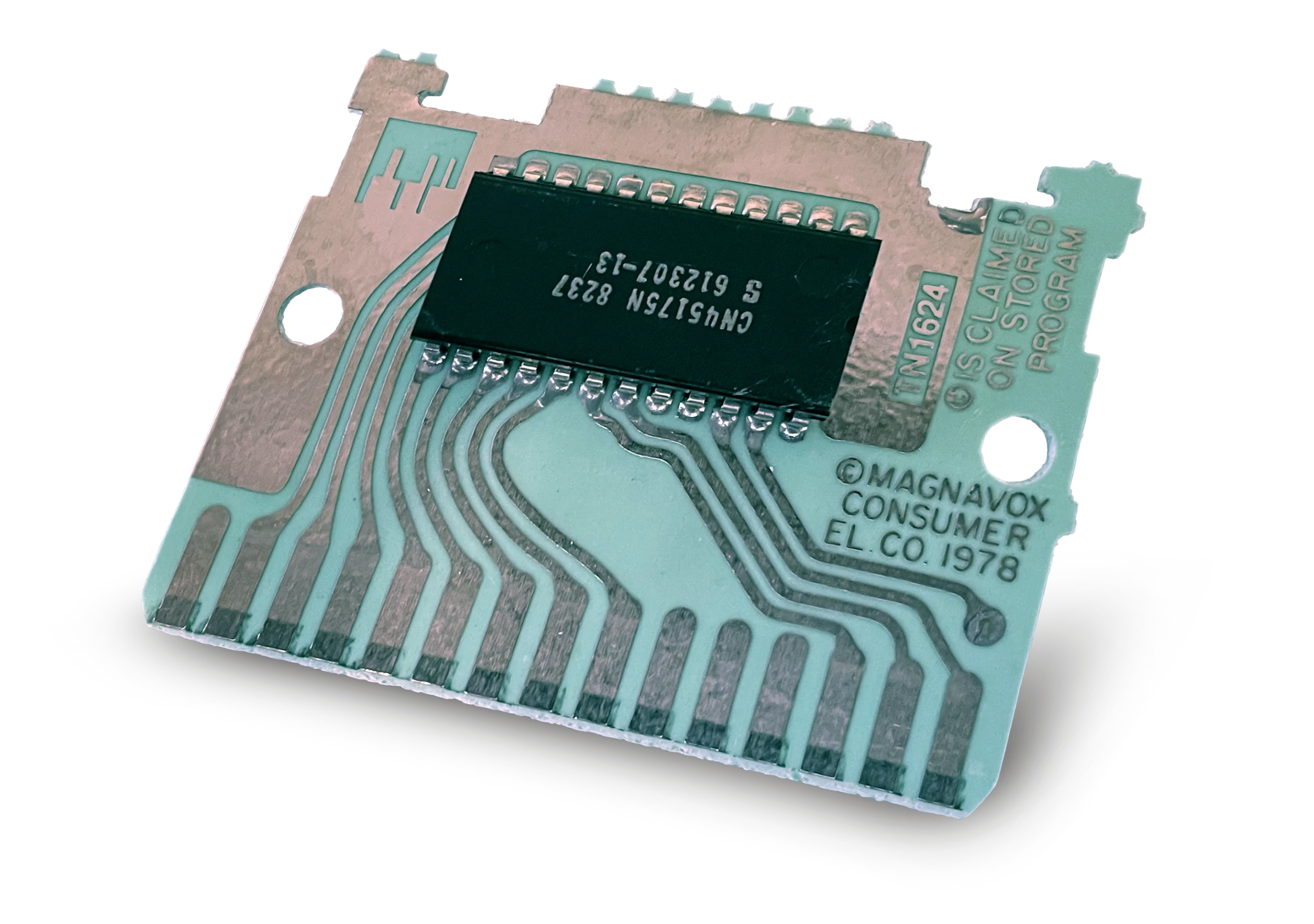An Extraordinary Find
The Voice Module development console.
In February 2024, the discovery and acquisition of a Voice Module development console unfolded by pure chance through an eBay auction. Acquired under the pretense the Voice Module was a standard unit, its true significance as a development console gradually emerged in the following days. We suspect the original owner to have been an employee at Magnavox during the 1970s/80s .
Console Views
Exploring the facade, imperfect perfection.
Take a look at the integration of the Voice Module with the Odyssey2 console in detail. Note the absence of supplementary ventilation on the Voice Module shell and the ribbon cable weaving through both units. While appearing very similar on the exterior, the interior tells a different story.






Technology
Time to talk the talk.
Pioneering new frontiers from the inside out. The Odyssey2 Voice Module utilizes a voice synthesizer based on the General Instruments SP0256 speech processor. This integrated chip operates on a tailored program designed to generate speech and various sound effects. On the Odyssey2 the program can be stored in ROM in one or more of the following; SP0256 chip, the Voice Module, and some cartridges.

The voice module and cartridges use special serial ROMs that receive addresses and send data to the voice chip one bit at a time, as opposed to the more common parallel interface. The advantage is it allows the voice chip to be interfaced to the ROMs with a minimum number of signals allowing the chip to have fewer pins and in turn they can be made smaller. The downside of serial ROMs is that the data must be programmed into them when the chip is manufactured.

Playing the field.
This console appears to be solving this serial ROM problem using a modified Odyssey2 and Voice Module likely for voice development. Inside is a General Instruments SFD2000 Speech Field Development Board1. The Voice Module has it’s ROM and SP0256 removed with a ribbon cable connecting it to the SP0256 socket.
Instead of using serial ROMs, the development board uses up to eight 2732 EPROMS. This is made possible by a General Instruments SPR000 IC chip. This chip converts the serial interface that the SP0256 expects into a parallel interface that works with standard EPROMS. Since EPROMS are easily erased and reprogrammed it would have made the voice development process much easier.
A power surge of fun.
The other non-standard board in the system is a small voltage regulator similar to the one on the Odyssey2s main board. This system uses two AC adaptors, one that connects to the main board just as it would on a normal system, and a second one that connects to the regulator board to provide five volts to the development board. The assumption is that this was added because the on-board regulator could not supply enough current to power both the system and the development board. It is unlikely that this was purpose-built for this system, it probably came from an off-the-shelf AC adaptor.
x02
Odyssey2 console houses two AC adaptors
12v
Odyssey2 power adaptor requiring 12 volts
5v
Dev board adaptor providing five volts
Housing Details
Innovative speech synthesis attachment.
A quick teardown of the Voice Module development console.

Interior Top Casing
Note the lack of vents on the left-hand side.

Exterior Lower Casing
The screw holes on the lower left and right hold the Voice Module to the console body.

Interior Lower Casing
The unit requires four bolts to hold the upper shell to the lower shell.
Listen to The Voice, it speaks for itself!
You’ll be amazed how much time the family will spend on learning when they have a talking video game to keep them company. The Odyssey2 Voice accepts every Odyssey2 cartridge ever made … as well as the new generation of Voice Series games that really speak your language!




